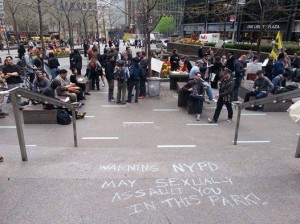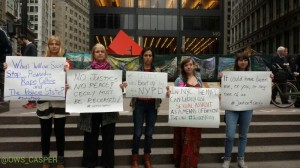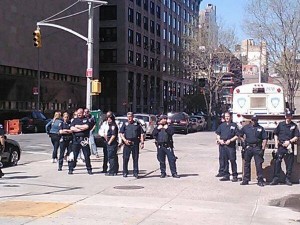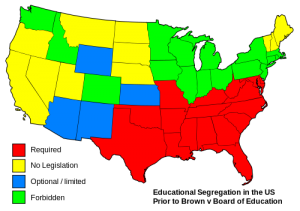Today’s the second Sunday in May, which means it’s Mother’s Day. And, while we might (and should) rail about the rampant commercialism of the holiday (even Anna Jarvis, the one person considered as making the day a national institution, decried what the holiday had become), the honoring of mothers across the country is still a worthwhile goal.
There aren’t many days, if any, that I don’t think at least once about my mom (or my dad, for that matter). However, there’s a few days a year I spend more time than usual thinking about her and what impact she had on my life.
It was 1965, and we had moved to the Chicago area from the Twin Cities the year before. My dad was the manager at the 3M plant in Bedford Park, and we kids were off at school all day. My mom, to fill up some of her spare time, took a part time job at the West Side Christian Parish, The West Side Christian Parish was founded in 1952 as an interdenominational church, but in the following years became more of a multiservice agency, providing many social services as well as operating storefront churches throughout Chicago’s west side. By the time my mom had arrived, the West Side Christian Parish’s main focus was on the civil rights movement. My mom’s boss was a young South Carolina native who was going to the Chicago Theological Seminary before dropping out to work full time with the civil rights movement; a man who most of you have heard of – Jesse Jackson.
In 1966, we participated in a program sponsored by the WSCP. For two weeks, we had a girl from the West Side come and live with us in the suburbs. At this time, the suburb where we lived (La Grange) was strictly white, so Erma coming to stay with us raised more than a few eyebrows and created lots of neighborhood gossip, none of it pretty.
When my dad was transferred back to the Twin Cities later that year, we sold our house to friends of ours, so our house never went up for sale on the normal market. After we had moved, the moving company sent in a cleaning crew; they were all black. Within a week, over half the houses on our block went up for sale on the rumor that we’d sold to a black family, because why else would we haven’t had a for sale sign outside and all the normal trappings of selling a house in America if that wasn’t the case.
My mom’s response was typical for her. Her first thought was “You have to be kidding me!” When she discovered that this was the actual response, she never stepped foot in that neighborhood again or had anything to do with anybody living there, even though we visited the area fairly often, as one of her brothers lived in the Chicago area, and my mom and dad still had many friends who lived around Chicago, as did we kids.
As we kids grew older and went through our teenage years, our house was always the home away from home for all of our friends. I remember many days when I’d get home from school and there’d be a bunch of my twin sister’s and my friends, sitting around the kitchen table and talking to my mom. I remember my mom providing a safe place on more than one occasion for somebody who ran away while things could be ironed out between him/her and their parents. I remember my mom lending money to more than one couple so the girl could get reproductive care and not have to drop out of school, get married at way too young an age or get thrown out of her house when she told her parents what had happened.
And, then there were the strays we’d bring home. My sister and I were true children of the ’60s and ’70s, and on numerous occasions, one of us would meet somebody who’d been hitching crosscountry or something along those lines, and we’d bring them home with us. They’d end up staying with us for a couple days, and join in the daily chat around the kitchen table. The one thing we’d always hear from them is “Your mom is a wonderful lady. I hope you realize how lucky you are.” We’d say we did, but I don’t think we really appreciated what wonderful lessons in life we had courtesy of my mother.
Fast forward to Easter Sunday, 1999. I’m at my parents’ for dinner, and my mom and I are having a smoke on their balcony. She told me that she has terminal cancer. She’s had two previous bouts so I shouldn’t be that surprised by the news, but it hits me like a ton of bricks. She said that she wasn’t going to undergo chemo, radiation or any of the other ruses that we use to deny our own mortality for a while longer. During the fall of 2000, she began to decline noticeably, and she passed away right after New Years of 2001.
Mind you, my mom wasn’t perfect by any means. She drank too much. She could be petty and vindictive upon occasion. She had other demons that I won’t discuss here, but don’t we all? When I think of my mom, I think of her giving spirit. I marvel at her ability to not pass negative judgment on anybody until it was richly deserved. And, on the rare occasions that she did prejudge somebody, I admire how she could admit that she had, and how she tried to correct the situation. She set a high bar for me to reach in interacting with others; I try every day to be as open minded as she was. And, she taught me the joy and wisdom of accepting when the end has come; to meet your end on your own terms.
This is my 14th Mother’s Day without her, and it doesn’t get any easier. Happy Mother’s Day, Mom. I love you…


![Image by Mikenorton (Own work) [CC-BY-SA-3.0 (http://creativecommons.org/licenses/by-sa/3.0)], via Wikimedia Commons](http://occupyworldwrites.org/wp-content/uploads/2014/01/1024px-HydroFrac-300x175.png)
![Yingluck Shinawatra. By Gerd Seidel (Rob Irgendwer) (Own work) [CC-BY-SA-3.0 (http://creativecommons.org/licenses/by-sa/3.0)], via Wikimedia Commons](http://occupyworldwrites.org/wp-content/uploads/2014/05/512px-9153ri-Yingluck_Shinawatra-199x300.jpg)






![By Gage Skidmore [CC-BY-SA-3.0 (http://creativecommons.org/licenses/by-sa/3.0)], via Wikimedia Commons](http://occupyworldwrites.org/wp-content/uploads/2014/05/Scott_Walker_by_Gage_Skidmore-239x300.jpg)
![May Day march in San Jose, CA 2006. By z2amiller (IMG_4919_2.jpg) [CC-BY-SA-2.0 (http://creativecommons.org/licenses/by-sa/2.0)], via Wikimedia Commons](http://occupyworldwrites.org/wp-content/uploads/2014/05/512px-San_Jose_May_Day_01-300x199.jpg)
![May Day 2012 at the Haymarket Riot Memorial. By Seth Anderson from Chicago, us (Occupy Barrier Uploaded by Ralgis) [CC-BY-SA-2.0 (http://creativecommons.org/licenses/by-sa/2.0)], via Wikimedia Commons](http://occupyworldwrites.org/wp-content/uploads/2014/05/Occupy_Chicago_May_Day_protestors_42-300x198.jpg)
![May Day clash in Istanbul 2013. By Birhanb (Own work) [CC-BY-SA-3.0 (http://creativecommons.org/licenses/by-sa/3.0)], via Wikimedia Commons](http://occupyworldwrites.org/wp-content/uploads/2014/05/May_day_clashes_in_2013-300x199.jpg)